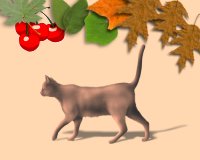Here be dragons
 Japanilaisen Jishin-no-ben -kartan lohikäärme, joka symboloi maanjäristyksiä
Japanilaisen Jishin-no-ben -kartan lohikäärme, joka symboloi maanjäristyksiäNew age -maailmassa yleinen myytti on keskiajan karttojen "Here Be Dragons" tuntemattomilla seuduilla. Tässä näyte termin yleisestä käytöstä:
There are some mysterious places in this world. I call these places "here be dragons" places. Medieval European map makers coined this term. They used to attach this comment to some places on their maps. Places that they were unsure of (most of the far east). There is a map on my wall. I stuck some "here be dragons" labels on them. One such place on my map is the place where the borders of Tibet, India and Myanmar meet. This is where the mysterious Shangri-la is supposed to be.
Karu totuus on, että yhdessäkään kartassa ei ole käytetty tätä termiä. Yhdestä kartasta, Lenox Globesta, on löydetty latinankieliset sanat "hic sunt dragones". Hirviöitä esiintyy kartoissa ja Umberto Eco, tarkka mies, panee "Ruusun nimessä" karttoja ja eriuskoisten kirjoja sisältävän huoneen nimikkeeksi "Hic sunt leones", "täällä ovat leijonat". Niin kutsutussa psalttarikartassa vuodelta 1250 on reunakoristeena kaksi lohikäärmettä mutta ei tekstiä. Sivusto moderneista myyteistä kirjoittaa:
So how the phrase ever gained the legendary status that we assume it to have is absolutely mystifying.

Psalttarikartan lohikäärmeet
 Mette miettii
Mette miettii












0 Comments:
Lähetä kommentti
<< Home